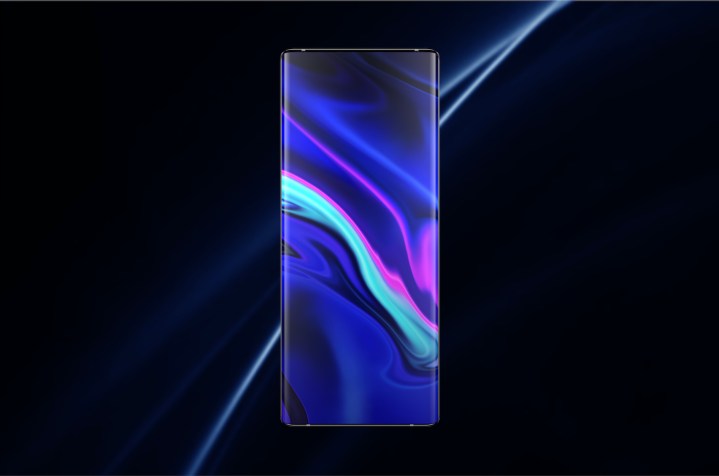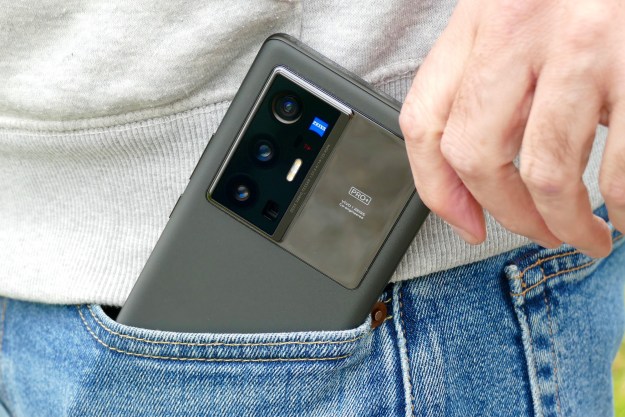
The Apex 2020 smartphone, made by Chinese brand Vivo, includes some extraordinary tech never seen anywhere else and is an exciting glimpse at what the company may build into some of its future devices. Like what, you ask? An invisible selfie camera, ultra-fast wireless charging, a continuous optical zoom camera, and a state-of-the-art image stabilization system for super steady video.
Like previous Apex phones, the Apex 2020 is a concept, but this isn’t just a series of renders and a hopeful press release. Vivo would have shown the real, working Apex 2020 phone during Mobile World Congress this week, had the show not been canceled at the last moment. What’s more, this is not a concept with tech that will never make it into phones we can buy. Vivo has always been committed to bringing examples of the tech we see here to mainstream smartphones, sometimes with only very minor alterations.
Let’s take a deeper look at the Apex 2020. There are no buttons on the unibody as the 6.45-inch waterfall screen wraps around the sides of the phone at up to 120 degrees, far beyond the 88 degrees on Vivo’s Nex 3. There are no ports either, so the Apex 2020 has to be charged wirelessly using the 60W Wireless Super FlashCharge technology inside, which Vivo says will charge a 2,000mAh cell in just 20 minutes. That’s quicker than many wired fast charging systems. Controversial at first due to the usability problems it presents, Vivo continues to gradually refine the button-less, bezel-less construction.

Around the front, the 16-megapixel selfie camera is hidden under the screen. This is tech we’ve started to see discussed already, but Vivo has apparently worked hard to solve the problems associated with these early in-display cameras. It says software alterations minimize interference from the screen and light leakage, while changes to the pixel layout and circuits have increased the amount of light that gets into the new 4-in-1 super-pixel sensor by six times.
The rear camera has two innovations. The first is a continuous optical zoom between 5× and 7.5×, which Vivo says produces high-quality photos without the need for the digital manipulation we already see with hybrid zooms. It is enabled by a special lens setup that uses two groups of lenses — two moveable lenses and two fixed — inside a compact module that’s only 6.2mm thick. Hybrid zoom tech is still used to enhance zoom shots at an even greater degree of magnification.

Next, Vivo has gone beyond the basic optical or electronic image stabilization (OIS and EIS) techniques by adding a gimbal-like stabilization system to the Apex 2020’s camera. This operates front-to-back and left-to-right, and in Vivo’s tests, it provides a 200% greater stabilization angle. Goodbye, hand shake. Why does this matter? Vivo says 5G — which is also built into the Apex 2020 — will mean we take more video at a higher resolution, at which time greater stabilization will become a desirable feature.
It would have been exciting to try the Vivo Apex 2020’s innovative new tech out at MWC 2020, but sadly that has not been possible. Instead, we may have to wait until Vivo integrates some of this into a commercial phone. In the past, its flagship Nex series phones have benefitted from Apex concept features. Vivo’s Nex 3 was announced in September 2019.
Editors' Recommendations
- Nomad’s new iPhone accessory is unlike anything you’ve seen before
- We’ve never seen a phone with a screen like this before
- This foldable phone has something I’ve never seen before
- We have the Vivo X90 Pro, one of 2023’s most interesting Android phones
- This bright orange phone has a pop-out camera unlike anything I’ve seen before




